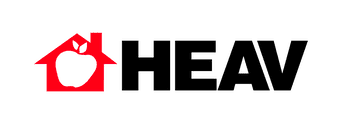What Will it Cost Me to Homeschool?
Considering homeschooling and preparing your personal budget? Here is a great place to begin your journey!
What Will it Cost Me?
by Vicki Bentley
If you are considering home education, you are likely a single-income family, and if you’re like most of us, your budget is pretty tight. Although I have read that the average homeschool family spends about $500 or more per student per year, I have never personally spent nearly that much. (HEAV’s 2023 shows that about 65% of homeschool families spend less than $1000 total annually, and most have two or more children.)
My most expensive year was my first year, when I used a prepackaged curriculum for each of three children. As we have accumulated non-consumable materials (“living books” or textbooks vs. workbooks), our home library has grown to the point of just adding a few supplemental materials each year.
Homeschooling costs more than public school, but less than private school. That may seem trite, but $500 can sound like a burden or a relief, depending on your previous education experience. What are some of the expenses that you should consider in drawing up an education budget? A curriculum is the broadest category and will most likely be your most expensive cost.
SAMPLE COSTS
Least Expensive
Some parents keep costs to a bare minimum by borrowing or renting curriculum from a friend or a support group, using public school textbooks, using the library, or using an all-inclusive basic curriculum (such as thick grade-level workbooks available at discount stores, et cetera). E. D. Hirsch’s Core Knowledge series or the State Standards of Learning used with library books would be examples of these options.
Moderately Expensive
A reasonable estimate would be about $250-350 per child, including games, software, and books. You can keep your bill down by selecting your materials from a variety of publishers. Some or all of these materials can be purchased used at about a thirty- to fifty-percent savings. Many publishers waive shipping if you purchase from them at curriculum shows. (Abeka and Bob Jones University Press both offer this discount, often at shows held at area hotels throughout the spring. The HEAV annual convention is another fabulous resource to get materials at a discounted rate.)
Another budget saver is multi-level and/or reusable curriculum. Those dollars seem to stretch if you can use the same content-area program for all or most of your students (examples: KONOS curriculum, Diana Waring’s history guides, Bible Study Guide for All Ages, Greenleaf Press, Five in a Row, Student Of the Word, Janice Van Cleave’s science books, Beautiful Feet guides, et cetera). The same applies if you can re-use the material for a later student (such as math textbooks, Learning Language Arts through Literature, most unit study guides, or other non-consumable items).
Example of a bare-bones generic curriculum for grade seven, at full retail pricing:
Saxon Algebra 1/2 – $108
Learning Language Arts through Literature – $28
Janice Van Cleave’s Earth Science for Every Kid – $14
Land of Fair Play (with tests, answer keys) – $18
TOTAL – $168 (plus tax)
If you didn’t re-use this package for another child, you could re-sell all of it for approximately 50-75% of your original cost (in decent shape, of course), bringing back $80-$110 of your original $168 investment. If you re-use it and then sell it, your per-child rate goes down tremendously.
Most Expensive
The most expensive route would be school-by-satellite, video courses, correspondence schools, or all-inclusive curriculum packages. These can run anywhere from $500 to $1000+ per student. However, this is still less than the cost of private school.
Standardized tests cost about $35-$55 per student; if you would like to hire someone else to actually administer the test, plan to pay an additional $25-$50 per student. A private evaluation can cost from $50 into the hundreds, depending on your evaluator. You may also choose to have your child tested in the local public school system if the school is testing at your child’s grade level (be aware that the results will be sent to the school).
PROFESSIONAL MEMBERSHIPS
- Local support group—$0 to $60 per year, depending on the group
- Home Educators Association of Virginia—$45 per year
- Homeschool Legal Defense Association—$135 per year (auto-renew)
$120 if you are a member of a discount group, such as HEAV or participating support group)
- HOME LIBRARY (NOT SPECIFICALLY CURRICULAR)
- Homeschool magazine subscription for mom and dad: $15-25/year
- Children’s resource books/magazines (God’s World, Nature Friend, et cetera): $18-65
- HEAV ANNUAL STATE CONVENTION
Full three-day family registration for the whole family: approximately $80 (does not include optional workshops or add-ons)
On-site accommodations—Marriott Hotel (2 nights): $220
Food/parking: varies
EXTRACURRICULAR LESSONS
In our area, music lessons cost approximately $15 per half hour (group rates are considerably less). Our homeschool band is $285 per year, plus instruments, for a total of about $485. Ballet or gymnastics classes are about $25 per month for nine months, for a total of $225. Individual or family membership in a gym or the local YMCA will vary. Local sports association fees also vary, from $15 for our homeschool softball league to several hundred dollars for varsity sports. I have recently paid $25 per two-hour class for my daughter to take oil painting from a local artist, while one of our moms teaches a weekly drawing class for $45 per month. Our support group’s learning co-op fee is $10 per family per month (for supplies).
SCHOOL SUPPLIES AND OTHER “SCHOOL AREA” ITEMS
This figure will depend on whether you buy brand-name binders or budget spirals, how many children you are outfitting with supplies, et cetera.
Needs and desires will vary from family to family: desks, sofa, computer, file cabinet, bookcase or storage unit, paper, hole punch, stapler, tape, pens and pencils, markers, dry erase markers and board, lesson planning book, file folders, pencil boxes, notebooks, erasers, globe, paints, calculator, scissors, glue, science equipment, et cetera. Many of these items will be one-time purchases, while others will need restocking each year.
MISCELLANEOUS
Field trips, gas money, admission for activities such as skating or bowling, phone calls, school photos, yearbook, co-ops, outside classes, anything else that is not listed above. Again, these are not necessarily critical items.
Sample for three children in a satellite program (K, 2nd, and 8th):
Curriculum – $700
Annual testing – $75 (often included in program)
Professional memberships – $150
Home library – $65
Annual convention (parents) – $80
School supplies 150
Art lessons (1 mo, oldest) & softball – $64
Miscellaneous – $50
TOTAL – $1,329
This is still less than the average. In subsequent years, the supplies may cost substantially less because you are buying basically just paper and pencils, or you may forego extra lessons, or put together your own curriculum package for considerable savings of up to several hundred dollars.
Be sure to purchase your core curriculum first, then add items from the other categories as your budget allows. Once you have an idea of what you plan to spend, divide it by 52 and set that much aside each week in a “homeschool budget” fund. If you have a lump sum of money at a particular time each year (such as tax time), consider setting your budget amount aside then. Many of these purchases can be made as funds allow, so you might purchase school supplies in August, join the support group in September, pay for band in monthly installments, register for the state convention in April, pay for testing in May, buy curriculum in June, et cetera.
Because I buy very little curriculum at this point, I have actually begun a homeschool year with no resources or curriculum outlay, paying as we went for memberships, classes, et cetera.
Last, but certainly not least, pray about the needs you have for your homeschool and ask God to provide for these things.
(Please note: Prices were accurate at the time of printing; some prices may have changed since publication.)
Vicki Bentley, the mother of eight daughters, foster mom of over fifty since 1985, and grandma to fourteen wonderful grandbabies has homeschooled 17 children over the last 15 years, with the strong undergirding of her husband Jim. She led a local support group of over 250 families for 14 years. She has served on the executive board of the Home Educators Association of Virginia and helps to coordinate their annual convention. Vicki has addressed state and national conventions, university teacher organizations, and many mothers’ groups. She is the author of My Homeschool Planner, Everyday Cooking, The Everyday Family Chore System, Home Education 101: A Mentoring Program for New Homeschoolers, High School 101: Blueprint for Success, and other homeschool and homemaking helps. Vicki has a heart for moms, with strong practical wisdom and encouraging words. EverydayHomemaking.com


